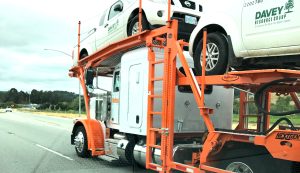Introduction To Toll Tags And Parking Permits
Toll tags and parking permits have become essential tools for modern drivers, streamlining the processes of road travel and parking in increasingly congested urban environments. These devices, although small and often overlooked, play a critical role in ensuring that journeys are efficient and hassle-free. Toll tags, also known as transponders or electronic toll collection systems, automatically deduct toll fees from a pre-funded account as vehicles pass through toll booths or designated lanes.
This eliminates the need for cash transactions and reduces congestion at toll plazas, allowing for smoother traffic flow.
Parking permits, on the other hand, grant authorized access to specific parking areas such as residential zones, university campuses, corporate offices, or public garages. These permits can be physical stickers affixed to windshields or digital passes linked to a vehicle’s license plate number. They provide an organized system of allocating limited parking spaces while ensuring that only eligible vehicles occupy them.
Both toll tags and parking permits contribute significantly to maintaining order on roads and within communities by facilitating seamless transitions through various checkpoints. However, their presence raises questions about what happens when you no longer need them—whether due to selling your car, moving to a different location, or changing service providers. Understanding the importance of these devices is the first step in making informed decisions about their removal or retention under various circumstances.
This introduction sets the stage for exploring whether it’s necessary to remove these items from your vehicle when they are no longer required or when transitioning between different uses.
Reasons For Removing Toll Tags And Parking Permits
When considering whether to remove toll tags and parking permits from your vehicle, several compelling reasons come to light. Firstly, security and privacy are significant concerns. Toll tags, which often contain personal information linked to your billing account, can be exploited if they fall into the wrong hands. This risk is particularly heightened in cases of theft or unauthorized access to your vehicle.
Parking permits, similarly, may reveal details about your routine or frequented locations, providing potential insights for malicious individuals.
Moreover, avoiding unnecessary charges is another pertinent reason. Leaving a toll tag active in a sold or rented vehicle could result in unintentional toll fees accumulating on your account. This scenario becomes even more plausible if the new driver frequently uses toll roads or bridges. By removing these devices before transferring ownership or lending out your car, you ensure that you maintain control over any incurred expenses.
Aesthetic considerations also play a role in this decision. Over time, multiple stickers and devices cluttering the windshield can impede visibility and detract from the overall appearance of the interior of your car. Regularly updating and removing expired permits helps maintain a clean and organized dashboard area.
Lastly, compliance with local regulations should not be overlooked. Some jurisdictions may require the removal of outdated parking permits to avoid fines or penalties during inspections or random checks by authorities.
In summary, prioritizing security, avoiding unintended charges, maintaining aesthetic appeal, and adhering to local regulations are key reasons for removing toll tags and parking permits from your vehicle when they are no longer needed or before selling it.
Situations When Removal Is Necessary
When considering whether to remove toll tags or parking permits from your vehicle, several specific situations necessitate their removal. One of the most common scenarios is when you are selling or transferring ownership of your vehicle. In such cases, it’s crucial to remove any toll tags and parking permits to avoid future charges being erroneously attributed to you. The new owner might not be aware that these devices are still active, leading to potential complications with billing and accountability.
Another situation arises when you are renting a vehicle. Rental agreements typically specify that personal toll tags and parking permits should not be used in rental cars, as the rental company often has its own systems in place for managing tolls and parking fees. Using your own devices can result in double billing or administrative headaches for both you and the rental agency.
Moreover, if you’re moving out of a state or region where specific toll tags or parking permits are required, it becomes essential to remove them from your vehicle. Different regions have distinct systems and regulations; continuing to use an old tag might result in fines or non-compliance issues.
Additionally, some maintenance activities may necessitate temporary removal of these items. For instance, windshield replacements often require that all stickers and devices be removed beforehand to ensure proper installation of the new glass.
In summary, removing toll tags and parking permits is sometimes necessary during vehicle sales or transfers, rentals, relocations across different regions with varying regulations, and certain maintenance procedures. Being mindful of these situations helps prevent unnecessary charges and ensures compliance with local laws and policies.
Steps To Safely Remove Toll Tags
Removing toll tags from your vehicle might seem straightforward, but it’s important to take certain steps to ensure the process is smooth and doesn’t damage your windshield or dashboard. First, identify the specific type of toll tag you have. Different types may have varying adhesive strengths or mounting mechanisms, so understanding what you’re working with can help you prepare better.
Start by gathering the necessary tools: a plastic scraper or an old credit card, some adhesive remover (like rubbing alcohol or a commercial product), and a soft cloth. Before you begin, it’s helpful to park your car in a shaded area where the temperature is moderate; extreme heat or cold can make adhesives more difficult to handle.
Begin by gently prying one edge of the toll tag using your plastic scraper or old credit card. Be patient during this step—forcing it too quickly can crack your windshield if too much pressure is applied at once. Once you’ve lifted one edge of the tag, slowly continue to peel it away from the glass while applying steady pressure.
If adhesive residue remains on your windshield after removing the tag, apply a small amount of adhesive remover onto a soft cloth and gently rub it over the sticky area until it dissolves. Avoid using metal scrapers as they can scratch and damage your glass surface.
Finally, clean the area with glass cleaner to remove any leftover residue from both the adhesive and cleaner itself. This will leave your windshield clear and ready for any new tags or simply for unobstructed visibility while driving. Taking these careful steps ensures that you can safely remove toll tags without causing any unnecessary damage to your vehicle.
How To Remove Parking Permits Without Damage
Removing parking permits from your vehicle without causing any damage can be a bit tricky, but with the right approach, you can do it effectively. The primary concern is to avoid leaving adhesive residue or scratching the glass or surface where the permit was affixed. Start by identifying the type of adhesive used on your parking permit. Some permits use a static cling mechanism and are relatively easy to remove, while others rely on stronger adhesives that bond more permanently.
Begin the removal process by gently warming up the area around the permit using a hairdryer. The heat will soften the adhesive, making it easier to peel off without resistance. Hold the hairdryer about six inches away from the permit and move it in circular motions for about 30 seconds to a minute.
Once warmed up, use your fingernail or a plastic scraper designed for this purpose to lift one corner of the permit slowly. Be cautious not to rush this process; pulling too quickly could tear the permit and leave parts behind that are harder to remove.
If you encounter resistance or notice residue being left behind, apply a small amount of rubbing alcohol or an adhesive remover solution using a soft cloth. Gently rub around and under the edges of the permit as you continue peeling it off gradually. These solutions help break down any stubborn adhesive without harming your vehicle’s surfaces.
After successfully removing the permit, clean any remaining residue with soap and water or an appropriate window cleaner. This ensures that no sticky spots remain, preparing your vehicle’s surface for either new permits or keeping it clean moving forward.
By taking these careful steps, you ensure that removing parking permits is done smoothly and safely without inflicting damage on your vehicle’s interior surfaces.
Potential Consequences Of Not Removing Them
When considering whether to remove toll tags or parking permits from your vehicle, it’s essential to understand the potential consequences of leaving them in place. Firstly, toll tags that remain attached can inadvertently trigger charges when you pass through toll plazas, even if you are not the intended user of the tag. This can lead to unexpected expenses accumulating on your account, especially if someone else is driving your car or if you are using a different payment method for tolls.
Moreover, parking permits left visible can pose security risks. They often contain identifiable information such as permit numbers or institution names, which could be exploited by individuals with malicious intent. For example, knowing that a vehicle is associated with a specific workplace or university could make it an easier target for theft when parked in certain locations.
Additionally, expired parking permits can create confusion and potential legal issues. Parking enforcement officers may mistakenly believe the permit is still valid and issue fines for infractions that wouldn’t have occurred had the outdated permit been removed. This can lead to unnecessary disputes and wasted time contesting tickets.
Finally, cluttered windshields reduce visibility and detract from the overall aesthetics of your vehicle’s interior. A windshield crowded with outdated tags and permits not only looks untidy but also impairs your view while driving, potentially increasing the risk of accidents.
In summary, failing to remove old toll tags or parking permits can result in unexpected financial charges, security vulnerabilities, legal complications from expired permits, and impaired visibility while driving. Taking a few moments to clear these items from your windshield can save you significant trouble down the road.
Alternatives To Permanent Removal
When considering whether to remove toll tags or parking permits from your vehicle, it’s important to explore alternatives to permanent removal. One option is the use of removable adhesive products that allow you to easily detach and reattach these items as needed. These adhesives are designed to hold tags securely in place during regular use but can be effortlessly peeled off without leaving residue or damaging your windshield or dashboard.
Another alternative is utilizing holders specifically designed for toll tags and parking permits. These holders come in various forms, such as suction cups, clips, and magnetic mounts. They offer the flexibility of temporarily affixing your tags without committing them permanently to one spot. Suction cup holders are particularly useful for windshields, allowing you to reposition or remove the tag entirely when it’s not required.
For those who prefer a less intrusive method, consider using a small storage pouch that can be kept in an easily accessible location within your vehicle, such as the glove compartment or center console. This way, you can quickly display the necessary permit when parking at designated areas or passing through toll booths and then store it safely afterward.
Additionally, some modern vehicles come equipped with built-in electronic systems compatible with digital tolling solutions like transponders embedded within the car’s infrastructure. If your vehicle supports this technology, it may eliminate the need for physical tags altogether while still ensuring compliance with toll payments.
These alternatives provide flexibility and convenience while preserving the functionality of your toll tags and parking permits without necessitating their permanent removal from your vehicle.
Faqs About Toll Tags And Parking Permit Removal
When considering whether to remove toll tags or parking permits from your vehicle, several common questions often arise. Understanding the nuances can help you make informed decisions that ensure compliance with regulations and protect your investment.
One frequently asked question is whether toll tags and parking permits need to be removed when selling or transferring ownership of a vehicle. In most cases, it is advisable to remove these items. Toll tags are often linked directly to personal accounts that track usage and charges, so leaving them in the car could result in unauthorized charges post-sale. Similarly, parking permits might be non-transferable and specific to the original owner’s credentials or affiliations.
Another common inquiry pertains to the impact of removing toll tags on their functionality. Most modern toll tags are designed for easy removal and reapplication without damage or loss of function. However, you should consult the guidelines provided by your toll service provider for specific instructions on how best to handle them.
People also wonder if it’s necessary to remove these items when taking their vehicle in for service or repair. Generally, it’s not mandatory but could be a wise precaution against potential misuse or accidental loss during servicing.
Lastly, questions about storage arise—how should one store removed toll tags and parking permits? These items should be kept in a safe place where they won’t get damaged or lost until they’re needed again.
By addressing these concerns thoughtfully, you can navigate the intricacies of managing toll tags and parking permits with greater ease and confidence.



